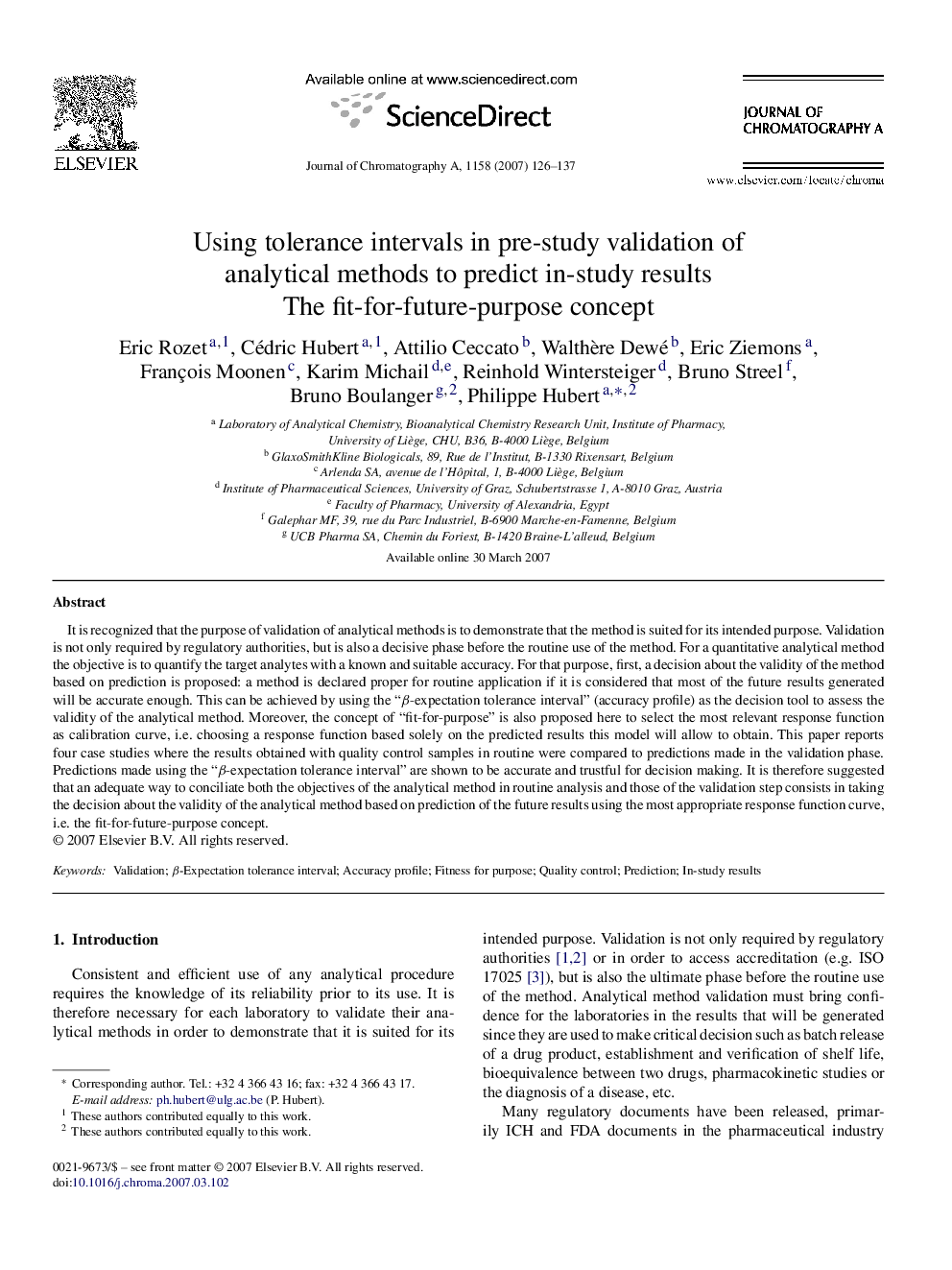| Article ID | Journal | Published Year | Pages | File Type |
|---|---|---|---|---|
| 1208397 | Journal of Chromatography A | 2007 | 12 Pages |
It is recognized that the purpose of validation of analytical methods is to demonstrate that the method is suited for its intended purpose. Validation is not only required by regulatory authorities, but is also a decisive phase before the routine use of the method. For a quantitative analytical method the objective is to quantify the target analytes with a known and suitable accuracy. For that purpose, first, a decision about the validity of the method based on prediction is proposed: a method is declared proper for routine application if it is considered that most of the future results generated will be accurate enough. This can be achieved by using the “β-expectation tolerance interval” (accuracy profile) as the decision tool to assess the validity of the analytical method. Moreover, the concept of “fit-for-purpose” is also proposed here to select the most relevant response function as calibration curve, i.e. choosing a response function based solely on the predicted results this model will allow to obtain. This paper reports four case studies where the results obtained with quality control samples in routine were compared to predictions made in the validation phase. Predictions made using the “β-expectation tolerance interval” are shown to be accurate and trustful for decision making. It is therefore suggested that an adequate way to conciliate both the objectives of the analytical method in routine analysis and those of the validation step consists in taking the decision about the validity of the analytical method based on prediction of the future results using the most appropriate response function curve, i.e. the fit-for-future-purpose concept.
